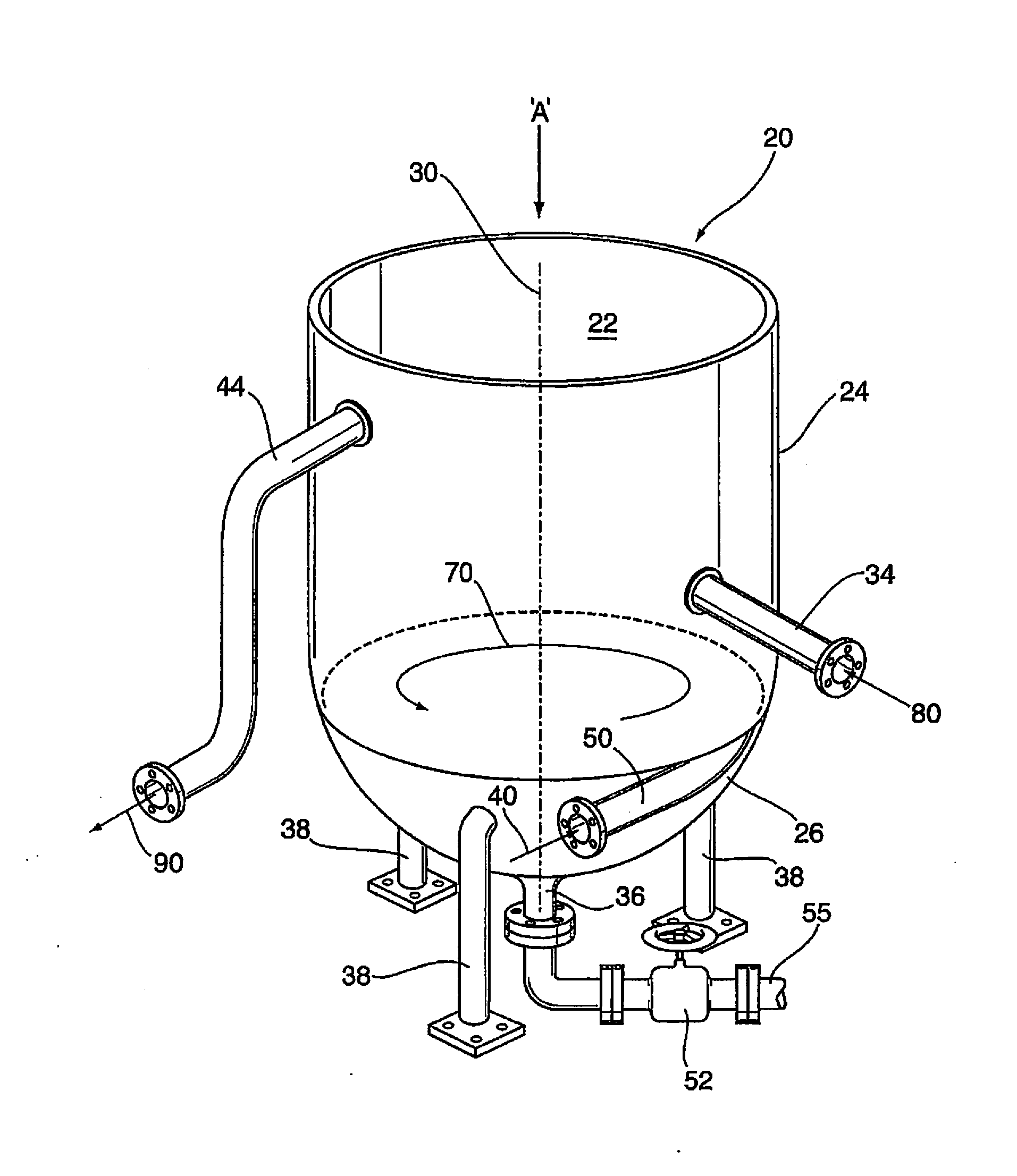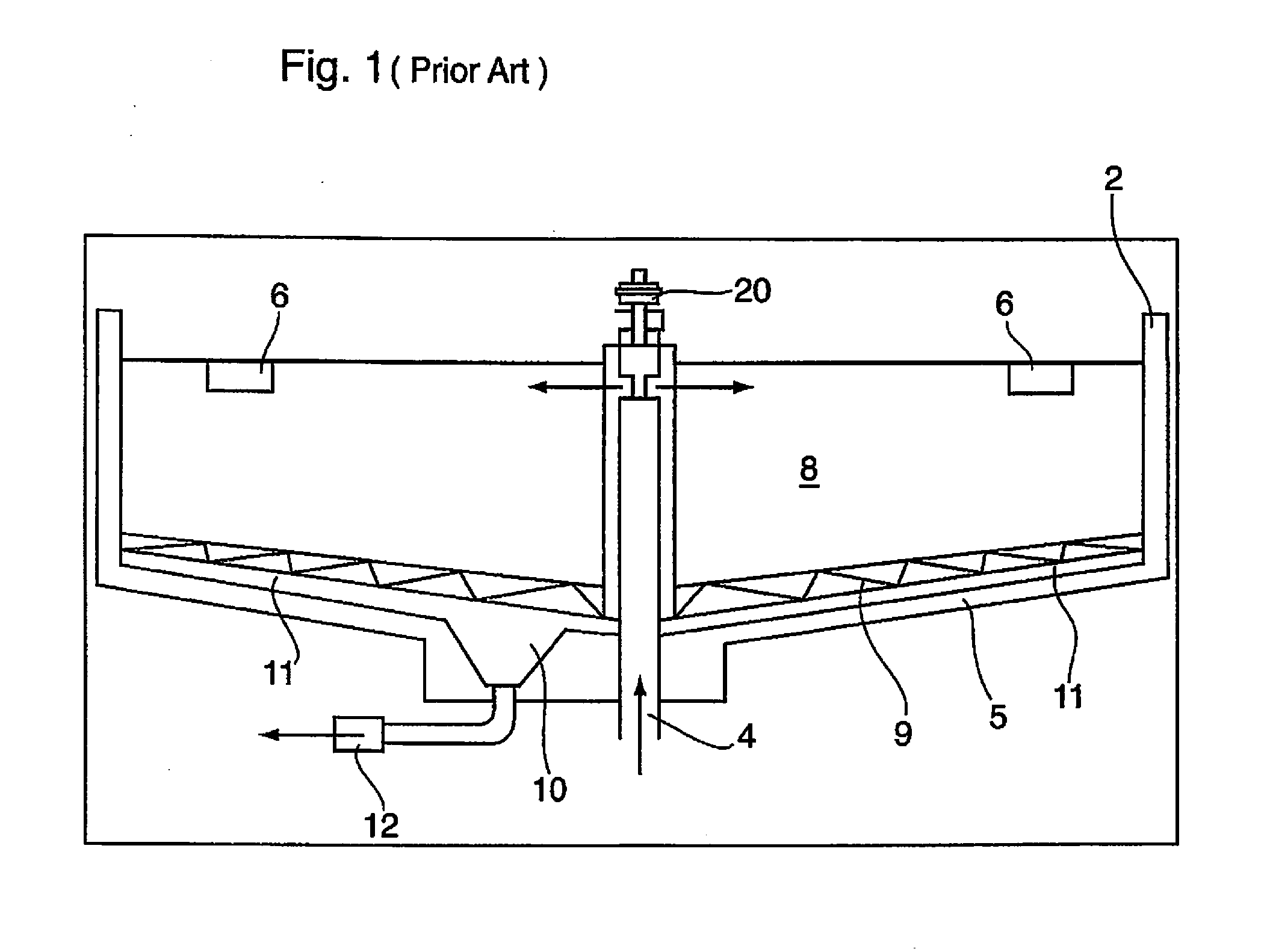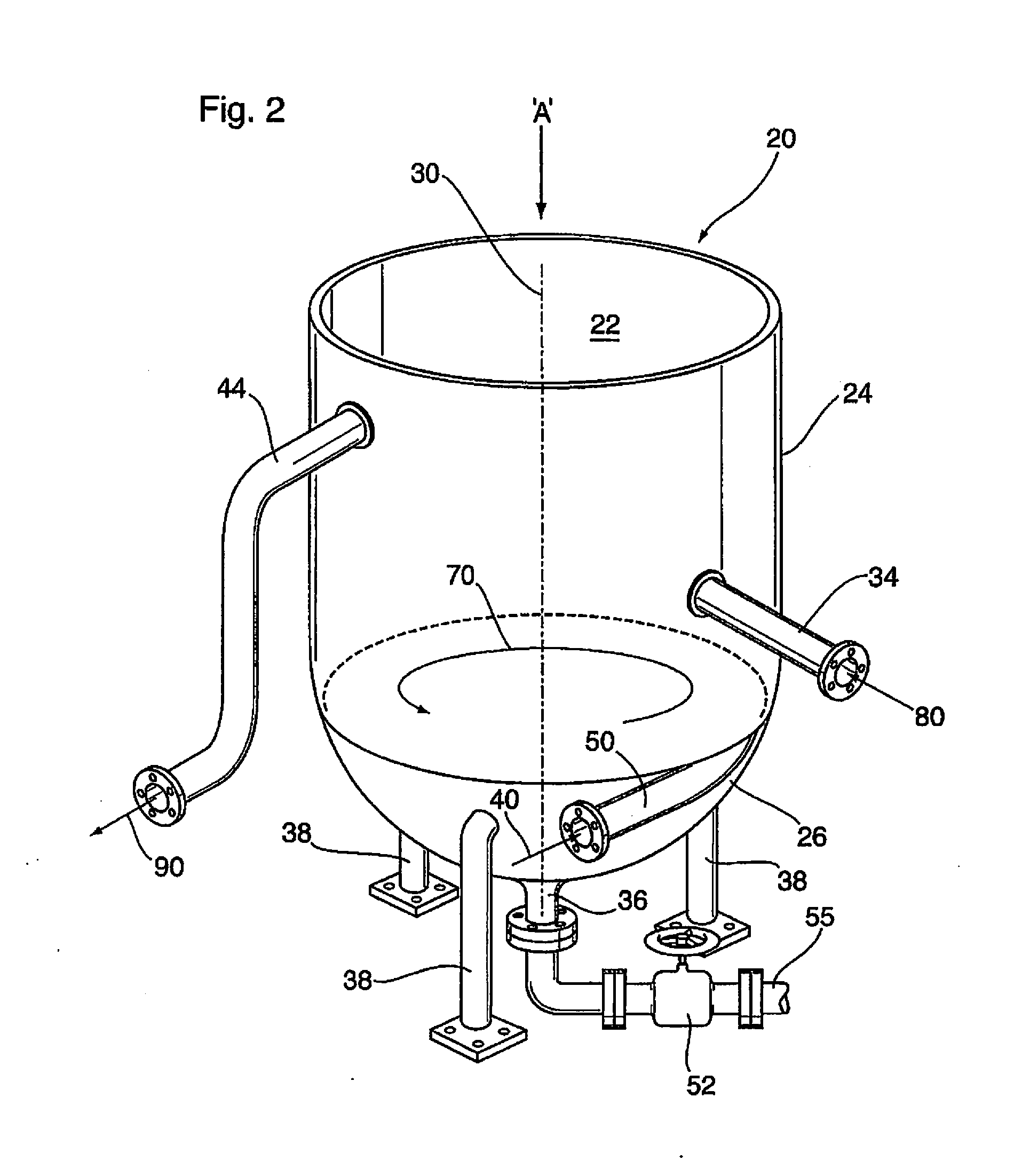Enhanced vortex fluid treatment apparatus, system, and method for separating solids from solids-containing liquids
a technology of vortex fluid and treatment apparatus, applied in the direction of gravity filter, centrifugal force sediment separation, feed/discharge of settling tank, etc., can solve the problems of reducing the overall efficiency of the entire settling tank, labor and time-consuming, and the physical shape of rectangular settling compartments
- Summary
- Abstract
- Description
- Claims
- Application Information
AI Technical Summary
Benefits of technology
Problems solved by technology
Method used
Image
Examples
example 1
Natural Vortex
[0150]The natural vortex created in a cylindrical compartment of the exemplary system was observed for comparison with systems comprising a jetting fluid stream of the present invention.
Method and Materials—Cylindrical Compartment
[0151]The cylindrical compartment having a six (6) foot diameter cylinder shape and torispherical bottom was used. A six (6) inch diameter drain was located in the center of the cylindrical compartment with a manually actuated compression valve to shut off flow to the drain (FIG. 11).
[0152]The cylindrical compartment was completely filled with fluid, in this case water, as it would be in actual field operations to a depth of 4 ft above that portion of the cylindrical vessel that transitions to a torisherical bottom. The compartment was allowed to stand idle for twelve (12) hours prior to the test to allow earth gravitational forces to stabilize.
[0153]There were significant amounts of settled solids collected on the bottom of the compartment. T...
example 2
Top-Located Vertical Jetting Stream
[0156]A second test was conducted utilizing a cylindrical compartment in combination with a jetting fluid stream of approximately ½″ diameter via a ½ inch diameter garden hose, introduced in a direction parallel to the longitudinal axis of the cylindrical portion of the compartment above the top fluid level of the contained fluid, at an velocity of approximately 130 ft. / min. (i.e. 20 l / min×0.0353147 cu.ft / l / (Π×(0.5 / 12)2)=130 ft / min). The effect of the jetting fluid stream on the natural vortex observed in Example 1 was determined.
Method and Materials—Cylindrical Compartment
[0157]A second cylindrical compartment identical to the compartment used in Example 1 was used. As in Example 1, the cylindrical compartment had a six (6) foot cylinder shape and torispherical bottom. A six (6) inch diameter drain was located in the center of the cylindrical compartment with a manually actuated compression valve to shut off flow to the drain.
[0158]As in Example 1...
example 3
Bottom-Located Horizontal Jetting Stream
[0161]The effect of a jetting stream introduced in essentially the same direction as the naturally occurring vortex was tested and compared to the observations made in Examples 1 and 2.
Method and Materials—Cylindrical Compartment
[0162]A third cylindrical compartment identical to the preceding Examples was used. Significant settled solids were again evident on the bottom of the settling compartment after the 12 hour stabilization period. The fluid was then allowed to gravity drain via the center drain outlet in a similar fashion as in the previous two tests.
[0163]For this third test, the forty (40) psi, twenty (20) liter per minute (130 ft / min) jetting stream was introduced in the lower portion of the chamber, well below the top of the torispherical section, essentially at the bottom of the torispherical bottom but located adjacent to the outer tank wall furthest from the center drain (FIG. 13). By introducing the jetting stream along the botto...
PUM
| Property | Measurement | Unit |
|---|---|---|
| diameter | aaaaa | aaaaa |
| diameter | aaaaa | aaaaa |
| diameter | aaaaa | aaaaa |
Abstract
Description
Claims
Application Information
 Login to View More
Login to View More - R&D
- Intellectual Property
- Life Sciences
- Materials
- Tech Scout
- Unparalleled Data Quality
- Higher Quality Content
- 60% Fewer Hallucinations
Browse by: Latest US Patents, China's latest patents, Technical Efficacy Thesaurus, Application Domain, Technology Topic, Popular Technical Reports.
© 2025 PatSnap. All rights reserved.Legal|Privacy policy|Modern Slavery Act Transparency Statement|Sitemap|About US| Contact US: help@patsnap.com



